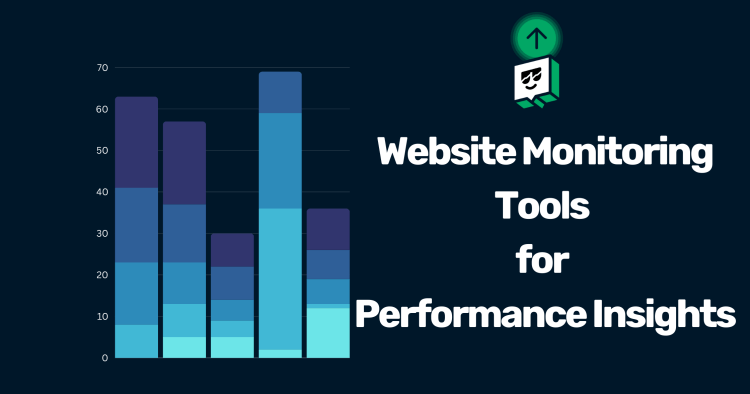
Using Website Monitoring Tools for Comprehensive Performance Insights
Having a successful website for your business includes getting a lot of factors right, and one of the most important is having fast performance. A slow website can hurt your business. For example, when customers organically visit your site and get frustrated with slower performance, they will leave, increasing your bounce rates. And when bounce rates are high, it damages your SEO, which reduces your SEO.
Luckily, web monitoring platforms have developed various tools to track your performance to help you increase responses. Two types of tools include synthetic monitoring and real user monitoring monitoring (RUM), which provide angles of performance tracking that would be of interest to anyone who wants to know how they can take advantage of metrics to increase performance.
Transaction & API Performance Tracking
Synthetic monitoring mimics user behavior and actions to catch issues before users experience them.
Transaction checks, which track the multiple steps of a specific transaction, fall under this category. For example, a transaction check follows a user’s steps for checking out of a shopping cart or signing up for an account.
You can track aggregated response times of a transaction, which includes how long it takes to fully load the page and all images and to run initial javascript, etc. This type of performance insight will help you zero in on user experience and behavior affected by slow or fast response times.
For a more in-depth look into each URL, you can use API checks to see how they are performing by triggering requests and checking response times. This can help drill-down on specific APIs that can be load- and performance-tested for issues.
Synthetic Monitoring Performance Graphs
Metric aggregations like Uptime.com performance graphs help visualize response times in a line graph that averages response times across all locations. It also includes an alert log graph that visualizes up and down time, which you can track along with performance degradation periods. With this tool, you can easily track when performance was down to pinpoint sources of issues and what user experiences were affected.
It can also be used to communicate across teams and levels how you are improving and what next steps to take.
RUM Apdex & Ajax Load Time
What is Real User Monitoring (RUM), you might ask? RUM tracks real user sessions rather than mimicking them. It gains site performance insight by tracking things like the number of page views, time to interactive, apdex score, ajax load time, and error rate. For performance, we are going to focus on apdex and ajax.
Application Performance Index (Apdex) is an open standard developed to measure the performance of software applications. It converts raw measurements into insights about user satisfaction with your application.
This is a helpful measurement to understand if the performance of your applications is causing friction between you and the customer due to frustration—and how your potential fixes are affecting the customers.
Another good metric to track is Ajax load time, which measures how much time it takes to make and process AJAX calls. These calls load and process data asynchronously, which helps make changes to a webpage in real time. A prime example is a live timer that counts down the time to a specific sale.
Using this metric, you can track if your real-time processing is fast enough for the effect you want.
RUM Performance Reports
RUM monitoring also aggregates all of its data into useful reports that can be used to determine problem points and ways to solve issues moving forward.
This report tracks page load time trends that measure the page load compared to the number of page views for a URL or a segment of the previous week’s results. Uptime.com’s RUM report provides a histogram that shows various useful categories, including page load time distribution, that shows the distribution of users that experience each level of the Apdex threshold defined in your check. The Y axis depicts the number of page views, while the X axis depicts page load time distribution up to the maximum recorded value.
You can adjust the data aggregation to focus on averages, medians, and other factors to discover how many users are affected by performance issues.
What Next?
Between synthetic and RUM monitoring, there are enough performance metrics to help determine where issues may lie within your website and how to fix them, along with how the issues affect your user satisfaction.
The best way to have comprehensive performance insight is to combine RUM with transaction check performance to get a holistic picture. Transaction checks performance metrics will track the time of a total of steps, while RUM will zone in on each URL’s performance, from server response to interactivity.
A quick (and free) way of checking your page performance is using Uptime.com’s Page Speed Test, which will give you a comprehensive report that includes speed visualization, where you can improve your performance, informative metrics on observed load, blocking time, and much more.
Minute-by-minute Uptime checks.
Start your 14-day free trial with no credit card required at Uptime.com.
 Uptime.com Blog
Uptime.com Blog


